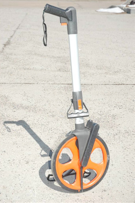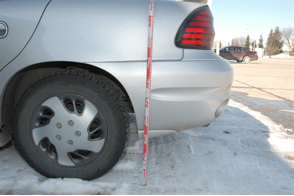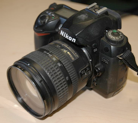Data Collection
When hiring an Engineer, information we are looking for includes:
- Insured/client name and insurance company
- Third party name and insurance company
- Date, time and location of the collision
- Available details of the collision and what happened
- Vehicle information, including year, make model and VIN
- Vehicle occupants and number, gender, injuries and seating location
- Where can we examine the vehicles with permission
- Specific permission to download the EDRs in vehicles (if equipped)
- Police data (Alberta Collision Report Form), photographs, statements, sketch, etc.
- Statements from the drivers and witnesses
 As noted above, data collection involves several aspects. From adjusters gathering witness statements, to requesting Police data, to documenting the site and vehicles. Some data is time limited, like site evidence. Therefore, it is important to examine the site as soon as possible, before evidence erodes. Tasks and considerations for examining the collision site include:
As noted above, data collection involves several aspects. From adjusters gathering witness statements, to requesting Police data, to documenting the site and vehicles. Some data is time limited, like site evidence. Therefore, it is important to examine the site as soon as possible, before evidence erodes. Tasks and considerations for examining the collision site include:
- Photograph and measure/survey the site.
- Site evidence is often short lived. Examination of the site before evidence erodes (e.g. tire marks) is important, especially if Police did not photograph or measure the site.
- Measure any pre-impact tire marks, impact gouges or scrapes along with post-impact tire marks, gouges and other evidence, along with the rest positions and orientations of the vehicles.
- Examine the roadway layout including curves, elevation changes, obstructions and signage for possible line-of-sight issues.
- Was darkness or lighting a factor in the crash? If so, a site visit under similar conditions may be warranted.
Police data is also a valuable source of information and includes the Alberta Collision Report Form, photographs, measurements and witness statements. Depending on the type of crash, the Police may have even more information available.
 A detailed vehicle examination is normally very important for most reconstructions and steps include:
A detailed vehicle examination is normally very important for most reconstructions and steps include:
- Document the vehicle damage and the extent thereof.
- Document the GVWR and vehicle capacity.
- Is the vehicle equipped with anti-lock brakes (ABS) or stability control?
- Check the condition of the tires.
- Check the mechanical functionality of the brakes, throttle and steering, as well as a potential other failures.
- Document the vehicle lamps if lighting was an issue in the crash (e.g. headlamps, brake lamps or signal lamps on/off).
- Document the vehicle interior for evidence of occupant contact and seat belt use, as well as potential seat belt benefits.
- Download the electronic Event Data Recorder (EDR) if equipped and permission obtained.
Witnesses can provide very useful information about a crash. From a reconstruction point of view, we have some recommended questions to ask witnesses (or drivers):
- Where did the impact occur and what lane was each vehicle in?
- What part of Vehicle-A hit what part of Vehicle-B?
- Was either vehicle drivable after the crash?
- Did the front, side or curtain air bags deploy in either vehicle?
- Where did the vehicles come to rest and what direction were they facing? Use landmarks or reference points such as lamp standards, bus stops, trees, signs, etc. Use distance estimates via car lengths, meters, feet, paces, etc.
- Before the impact, did either driver brake, accelerate or steer? For how long (time or distance)?
- How many occupants were in each vehicle? Were they male, female, child? What was their stature (height and weight)?
- Where was each occupant seated and was each occupant seat belted (reasons why or why not)?
- Was there any cargo in the vehicle?
- Ask drivers if there were any warning lamps on their dash (e.g. ABS or air bag) and if any repairs were recently completed on their vehicle.
 Photographs are a very important part of data collection as they are a permanent record of our observations. Our experts have years of experience in taking the appropriate photographs so that the evidence is clear in our reports and during our court testimony. We can simply collect the data to ensure the evidence is retained for possible future use, or we can proceed with an analysis.
Photographs are a very important part of data collection as they are a permanent record of our observations. Our experts have years of experience in taking the appropriate photographs so that the evidence is clear in our reports and during our court testimony. We can simply collect the data to ensure the evidence is retained for possible future use, or we can proceed with an analysis.











